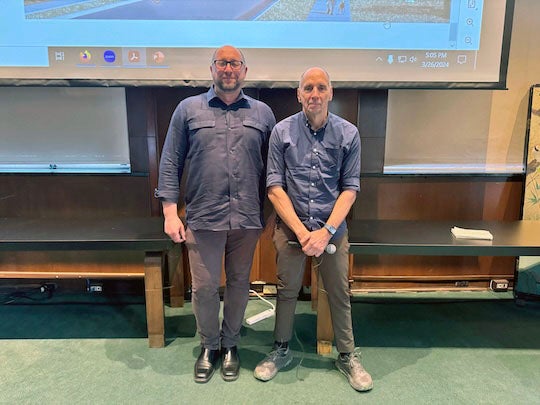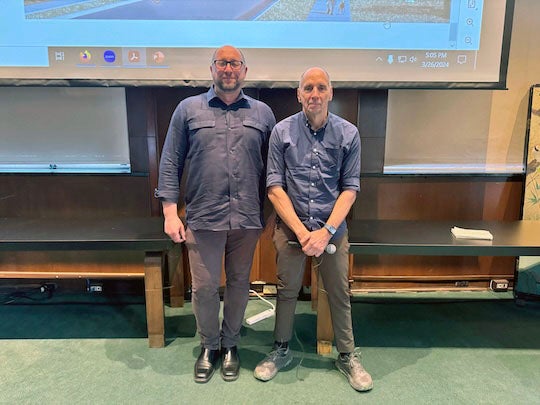In a recent lecture titled “Climate Resilience and Urban Design,” Rice University professors Dominic Boyer and Albert Pope shed light on the hydrological and infrastructural challenges Houston faces. That includes flooding triggered by the impacts of climate change, the duo said, as they discussed the need for sustainable solutions at a recent Scientia Institute Lecture Series event in the Kyle Morrow Room at Fondren Library.
Boyer, a professor of anthropology and co-director of the Center for Coastal Futures and Adaptive Resilience, highlighted the importance of participatory design planning and infrastructural citizenship.

“The real problem is figuring out what sustainability means in a megalopolis that was built in a swamp,” he said.
Boyer spoke about the obstacles facing northeast Houston, which has experienced devastating flooding due to various factors such as insufficient infrastructure and impediments causing drainage issues. He stressed the necessity of adopting a public framework to address neglected stormwater structures and facilities.
Some promising strides are being made in the area to develop community-led initiatives focused on green stormwater infrastructure, especially rain gardens. These gardens help manage stormwater and create attractive green spaces and community amenities.
“You can create a stormwater detention system and something beautiful at the same time,” Boyer said.
Pope, the Gus Sessions Wortham Professor of Architecture, spoke about the difficulties of achieving a green energy transition to meet President Joe Biden’s goal to reduce U.S. greenhouse gas emissions by 50-52% below 2005 levels in 2030.
Emissions in the United States increased from 2020 to 2021 by 5.2%, driven largely by an increase in carbon dioxide emissions from fossil fuel combustion due to economic activity rebounding after the height of the COVID-19 pandemic, according to the U.S. Environmental Protection Agency.
“We’re heading in the wrong direction,” Pope said. “The challenge we face is to create a 19th-century carbon footprint without backsliding into a 19th-century standard of living.”
Pope addressed the importance of taking action in rethinking urban design amid climate change and flood risks. He pointed out the connection between urban design, architecture and environmental sustainability and advocated for innovative solutions such as cross-laminated timber construction and carbon capture in urban forestry to reduce city carbon footprints.
“We have an opportunity to address the problems of the day and respond to them,” he said. “Cities are thought of as permanent, but they’re not. They’re always transforming.”
Scientia is a faculty-led institute at Rice that promotes multidisciplinary engagement to benefit the university community and Houston. Watch the entire lecture here.

